How Can I Relieve My Shoulder Pain?
Shoulder pain is a common musculoskeletal condition affecting many adults. Shoulder pain may arise from the shoulder joint itself or from any of the many surrounding muscles, ligaments, or tendons. Pain that comes from the shoulder joint usually worsens with movements or activities of the arm or shoulder. Various diseases or conditions can cause pain in the shoulder. Some conditions such as rotator cuff tendonitis, shoulder impingement syndrome, labral tears, and shoulder instability are more commonly seen. At Symmetry Physical Therapy our goal is to provide an exceptional patient experience at each visit! We recognize that recovery is a multifactorial process. Here is a little insight into how we rehab our shoulder patients in Miami!
What is Causing My Shoulder Pain?
This is identified during the initial evaluation. A comprehensive health history will help to provide a clear understanding of the injury. You will answer questions such as:
- When did the injury start?
- How did the injury start?
- What treatment have you tried so far?
Also be mindful of your symptoms to give the most accurate information possible. Paying attention to the following.
- Where does my shoulder hurt?
- How much does my shoulder hurt?
- When does my shoulder hurt?
- What does it feel like?
- What makes my shoulder pain worse?
- How can I make my shoulder pain better?
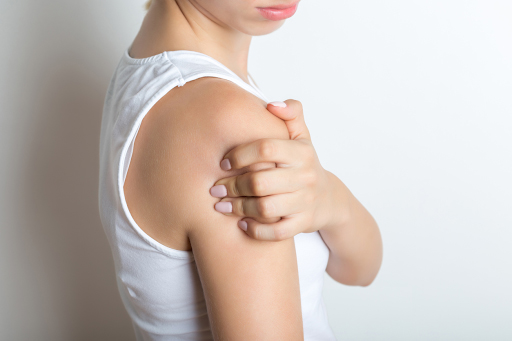
What Happens During the Initial Physical Therapy Exam for Shoulder Pain?
First up is the physical examination. Here your physical therapist will inspect the shoulder looking for obvious signs of swelling, bruising, or discoloration. They look for specific tenderness along certain muscles, tendons, and bones based on their expertise in anatomy. Depending on where the tenderness is, they will be able to determine the origin of the pain. They will look at the range of motion, strength, coordination, and your ability to raise your arm and carry an object. Finally, they will complete a series of special tests used to help identify specific structures that may be involved.
What are Some Common Shoulder Pain Conditions that You Treat?
There are a variety of different shoulder injuries that could cause and contribute to shoulder pain. The four most common conditions are: Rotator cuff tendinitis, shoulder impingement, labral tears, and shoulder instability.
Physical Therapy for Rotator Cuff Tendonitis
Tendonitis is the inflammation of a tendon, most commonly due to overuse. A tendon is a thick tissue that connects muscle to bone. The rotator cuff muscles are key shoulder muscles that add control and stability to the joint. Rotator cuff tendonitis is one of the most common shoulder conditions that affects adults over the age of 40.
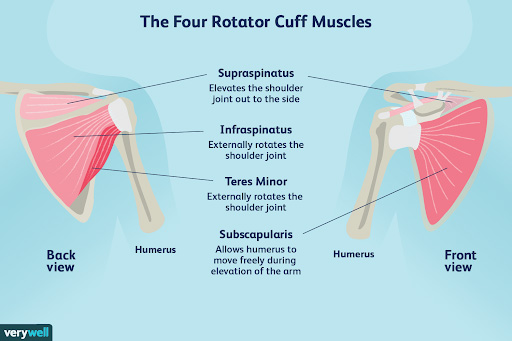
With rotator cuff tendonitis you may feel:
- Pain in the shoulder sometimes radiating into upper arm but not past the elbow
- It may be pain free at rest or mild dull ache
- Reaching behind the back, fastening a seat belt, and overhead activities can be very painful
- Shoulder weakness
- Pain that wakes you up at night
Physical therapy management consists of specially selected manual therapy techniques to improve range of motion, decrease pain, and inflammation. Progressive strengthening exercises to build back up the tolerance of the rotator cuff tendons. Flexibility exercises to restore normal shoulder range of motion. Your physical therapist will create an individually tailored recovery program to meet your needs.
Physical Therapy for Shoulder Impingement Syndrome
Shoulder impingement syndrome is a condition that causes pain in the shoulder and disability. It occurs as a result of repeated compression of the rotator cuff tendons and structures such as the long head of the biceps tendon, bursa, or ligaments of the shoulder. It is usually caused by doing a lot of work or participating in a sport that involves stretching or lifting the arms overhead. Patients will report feelings of…
- Restricted shoulder motion and weakness when reaching overhead, behind the body, or outside
- Pain with moving the arm overhead, out to the side, and beside the body
- Discomfort and pain when attempting to sleep on the involved side
- Pain with throwing motions or other overhead motions.
Physical therapy is a key part of the treatment for this condition. Working with your physical therapist you will come up with a list of exercises to improve your strength, flexibility and quality of movement to recover. Your physical therapist will also select specific hands-on techniques such as joint manipulations and mobilizations based on your symptoms.
Physical Therapy for Labral Tears
The labrum is a ring of connective tissue (cartilage) that surrounds the shoulder socket. It’s purpose is to deepen the socket and add stability. Injuries to the labrum are common and can cause a lot of pain, and make it hard to move the arm. They can occur either due to an accident or gradually due to overuse or poor mechanics.
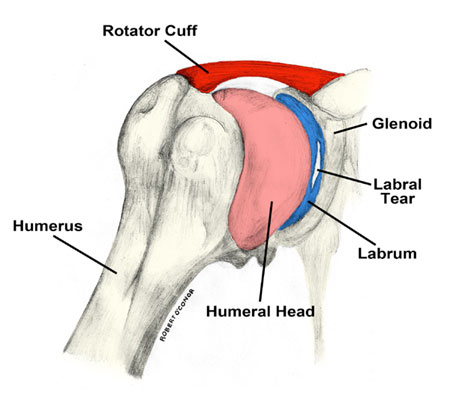
With a labral tear you will feel pain over the top of your shoulder, popping, clunking, or catching with shoulder movements, shoulder weakness, and a sensation that your shoulder joint will pop out of place. A proper physical therapy program is key to a successful recovery. This will consist of manual therapy, strengthening exercises, stretching exercises, postural exercises, and a home program.
Physical Therapy for Shoulder Instability
Shoulder instability is a common injury among people participating in contact and noncontact athletic activities. Shoulder instability can be caused by either trauma, an accident, or due to a gradual onset. It is more common in those with this condition to have loose joints and muscle weakness. This condition will commonly feel as if the shoulder is going to slip out of the socket. This will cause pain in the front of the shoulder. Conservative management is key for shoulder instability. First, physical therapy will focus on reducing pain and inflammation. This will be achieved by specially selected manual therapy techniques and the use of modalities. Then a progressive strengthening program to increase the rotator cuff muscles and scapular muscles will be initiated. This will aid in the return to activity and prevent reoccurance.
What Will My Physical Therapy Sessions Look Like?
Every patient visit in our Downtown Miami/Brickell location we strive to give the most exceptional experience. Click here to learn more about how we do just that. Following the assessment an individualized plan will be created to target the cause of the problem. Education is a crucial component. If you don’t properly understand the problem and what to expect the road to recovery becomes fuzzy. Your physical therapist will give information about the condition, how long it will take to recover, and what to do at home. A progressive exercise program will most likely be included based on the findings of the initial assessment. This will help to improve weakness, inflexibility, loss of endurance, and quality of movement.
Hands-on care is also an especially important part of recovery. This may be either some soft tissue massage or joint manipulation. Your therapist will select specific joint mobilizations to perform based on your exact symptoms.
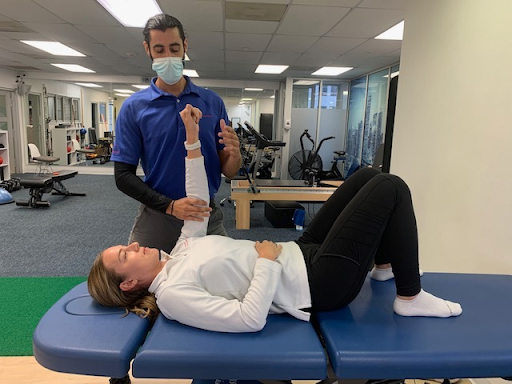
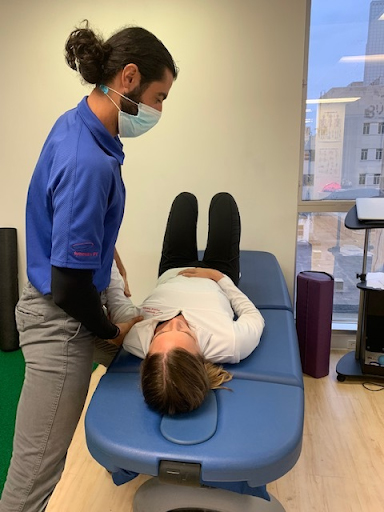
We look forward to getting you back to being your best you! Click here to begin the journey and hope to see you soon!
